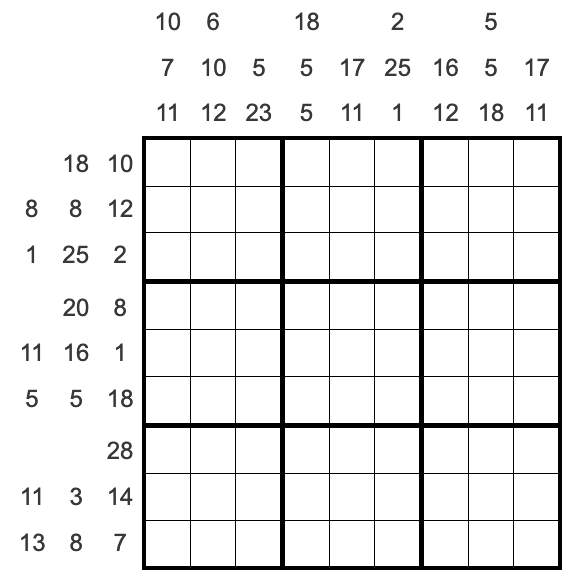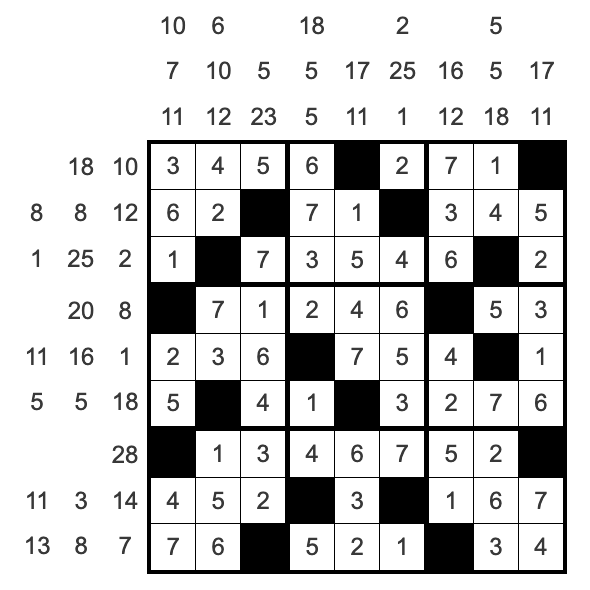Sudoku? Not!
Puzzle penned by Denis Auroux for the 2008 Integral
It's actually more like Japanese Sums...
Like a sudoku, the goal is to enter digits into the grid so that each digit appears exactly once in each row, column and outlined 3×3 region. Unlike a sudoku, you will be using the digits 1 through 7 (some cells will be left blank) and no digits are given; instead, the numbers outside the puzzle are the sums of consecutive digits, in order, separated by one or more blank cells.
An illustrative example, solving hints and full solution are published below.

The Example
In the example, the digits 1, 2 and 3 are used in a 4×4 grid (so, one empty cell per row, column and 2×2 outlined region).

Solving Hints
- Just given the clues, you can immediately deduce whether several cells are empty or not.
- Certain clues, such as a 1 or a 2, can only be satisfied with single-digit answers.
- Given some of the structure of the puzzle (that is, knowing the locations of some of the empty and nonempty cells), you can deduce most of the rest of the structure (there are exactly two empty cells in each row, column and 3×3 outlined section).
- Once you've worked some of the puzzle out, much of the logic becomes like that of
kakuro cross-sums puzzles: it is helpful
to list all the ways to express a given clue as the sum of some of the digits between
1 and 7. For example, the sum of five consecutive digits must be at least 15
(= 1 + 2 + 3 + 4 + 5) and at most 25
(= 7 + 6 + 5 + 4 + 3). Here's a helpful table:
# of
cellsMin.
ValueMax.
Value1 1 7 2 3 13 3 6 18 4 10 22 5 15 25 6 21 27 7 28 28 - Once much of the puzzle is solved, some "sudoku logic" becomes very helpful.
The Solution

